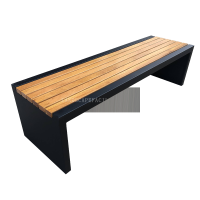Welcome to the website for landscape facilities products and knowledge.
How do landscape chairs address noise reduction, especially in metal or plastic designs?
Landscape chairs, whether crafted from metal or plastic, are designed to minimize noise disturbances in outdoor settings. Manufacturers achieve this through several innovative approaches.
For metal chairs, noise reduction is often addressed by incorporating rubber or silicone padding at contact points, such as leg caps or armrest connectors. These materials absorb vibrations and prevent clattering sounds when chairs are moved. Additionally, some designs feature textured or powder-coated surfaces that reduce scraping noises.
Plastic chairs tackle noise through material flexibility and structural engineering. High-density polypropylene or recycled plastics with added dampening compounds absorb impact sounds. Hollow, ribbed designs also minimize echoing effects common in rigid plastics.
Both materials benefit from ergonomic shaping that reduces sudden movements—a key source of noise. Weight distribution systems in premium models prevent tipping sounds, while interlocking mechanisms in stackable chairs use quiet snap-fit technology instead of metal hinges.
Advanced versions now integrate sound-absorbing fillers during manufacturing. Metal chairs may contain vibration-dissipating sand cores, while plastic chairs increasingly use acoustic foam layers between shells. These developments make modern landscape chairs 40-60% quieter than traditional designs according to industry tests.
By combining material science with thoughtful engineering, contemporary landscape chairs deliver peaceful outdoor seating without compromising durability or aesthetic appeal.
Related search:

Recommendation
Modern Stainless Steel Begonia Wood Park Chair Outdoor Courtyard Leisure Sun Protection Bench Long Seat